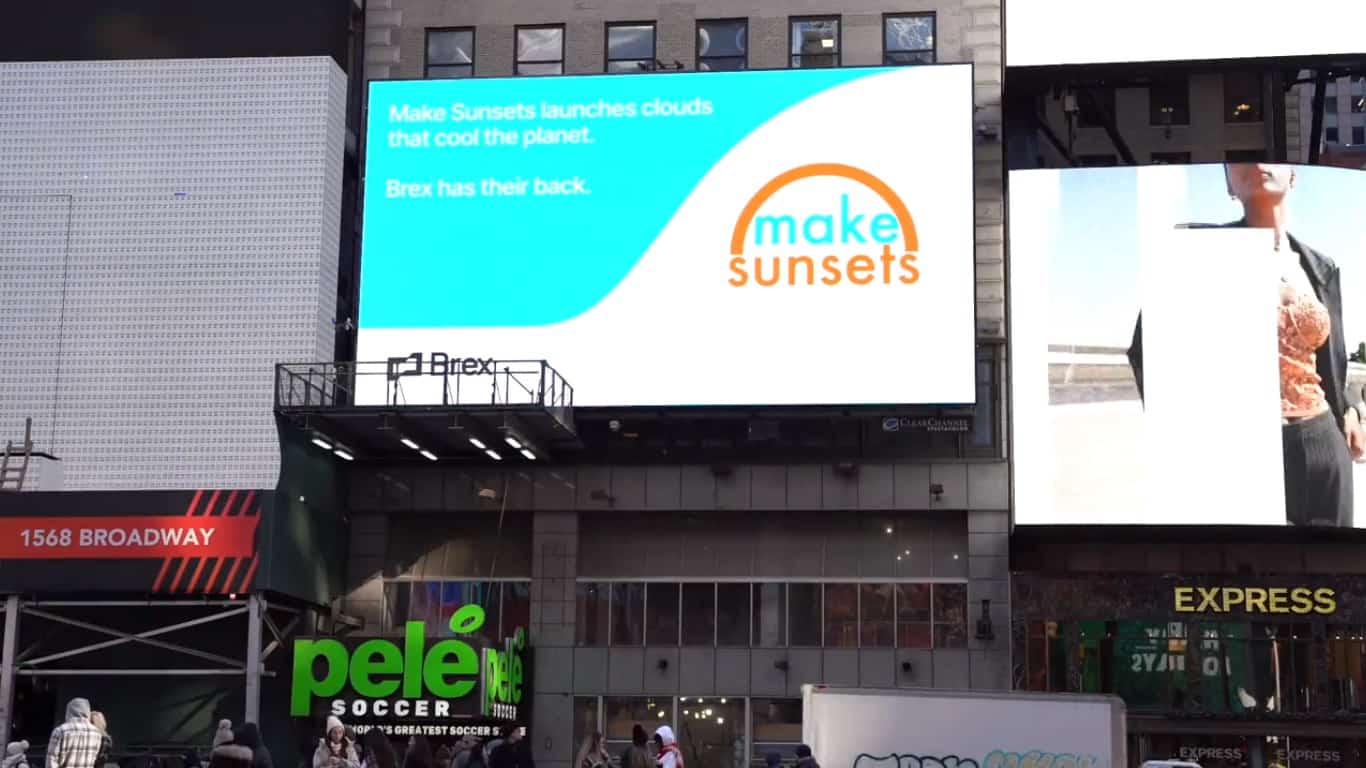Make Sunsets sells “cooling credits” to support its geoengineering startup. Some experts say it’s the rogue actor they’ve worried about.
The Make Sunsets startup says it has begun small-scale geoengineering, with sulfate particles injected into the stratosphere to deflect solar rays and reduce global warming from the sun. That’s sparked new conversations on when and whether such interventions should be deployed to fight climate change.
Luke Iseman and Andrew Song, founders of Make Sunsets, say they’ve already completed two test flights to create small clouds with the particles. Make Sunsets also is selling US$10 “cooling credits” to support future missions into the atmosphere, with an eye toward generating revenue and scaling up the delivery of the the sun-blocking particles via reusable balloons.
The company claims one gram of released particles purchased through the credit will offset the warming effect of one ton of carbon for a year. The manufactured “clouds” stay in the atmosphere between six months and three years, depending on the latitude where they’re released and how high into the atmosphere they go.
Iseman and Song kept their project relatively quiet until Saturday, when MIT Technology Review published an article about its advances—and, more critically, the ethical dimensions and scientific and geopolitical concerns that surround their actions.
Some experts see Make Sunsets as a less-than-serious effort designed to stir up controversy over geoengineering, while others recited a litany of objections to deploying particle clouds without oversight or governance, and while acting outside of the global scientific community.
“The company’s behavior plays into long-held fears that a ‘rogue’ actor with no particular knowledge of atmospheric science or the implications of the technology could unilaterally choose to geoengineer the climate,” writes author James Temple, “without any kind of consensus around whether it’s okay to do so—or what the appropriate global average temperature should be.
“That’s because it’s relatively cheap and technically simple to do, at least in a crude way,” he added.
Yet scientists still don’t know what will happen if solar radiation management (SRM) techniques are deployed at scale. Experts like David Keith and his colleagues at Harvard University study solar engineering and aerosols, and Germany and the United Kingdom are among other Western nations where scientists study the techniques.
While the United States and other developed countries are approving research funds, scientists in the Global South are concerned that solar geoengineering can lead to health, environmental and economic consequences for billions of people without any consensus from their leaders. Temple notes that it was from Mexico that Make Sunsets launched its tests, without any public engagement or scientific scrutiny.
The DEGREES Initiative, based in London, is one organization working to ensure equity and access on solar radiation management research for scientists from Kenya, Bangladesh, the Philippines and other countries concerned about how geoengineering might affect agriculture or make natural disasters worse.
But the Make Sunsets initiative doesn’t appear concerned about consensus, at least at this stage.
“Since the MIT Technology Review article has come out, we’ve been both amazed and amused by the responses,” the company posted to its Twitter account on Monday. “To the supporters and scientists that believe in us, thank you.”
This story first appeared on Sustainability Times
© 2022 Sustainability Times.
This article is licensed under a Creative Commons Attribution-ShareAlike 4.0 SA International License.












